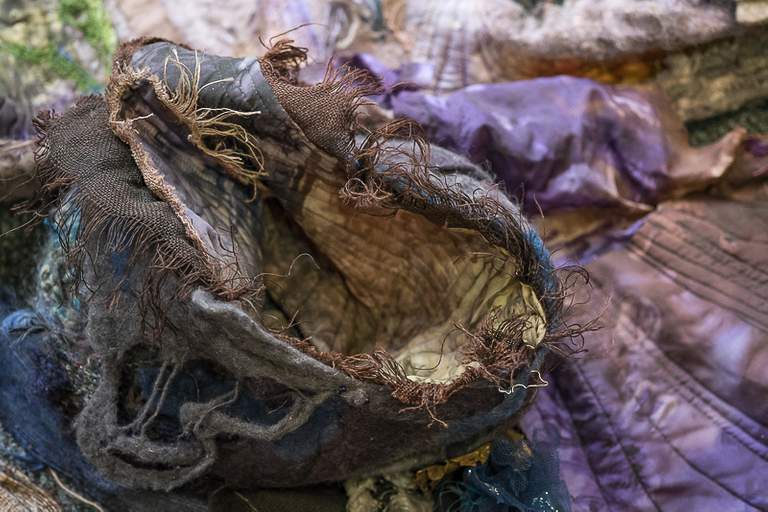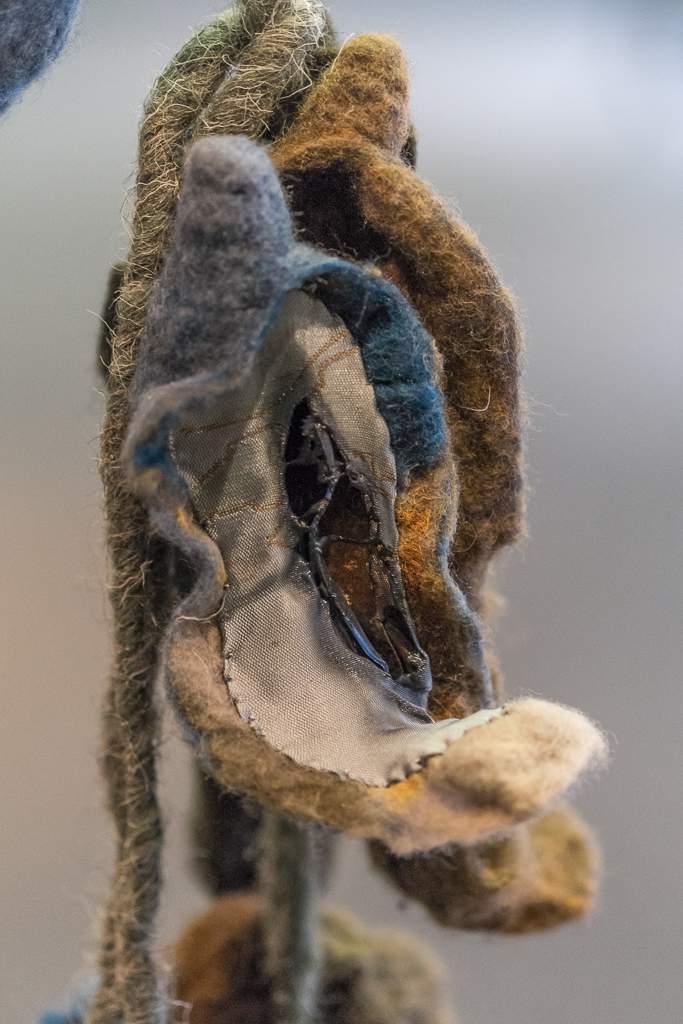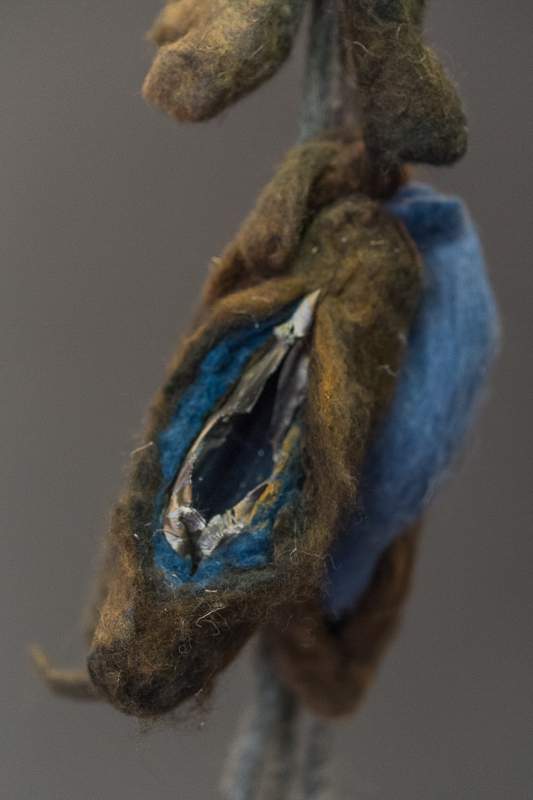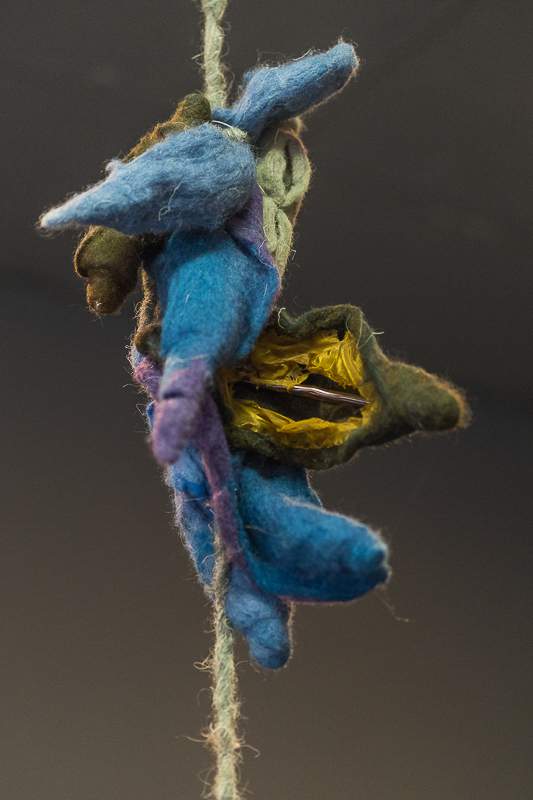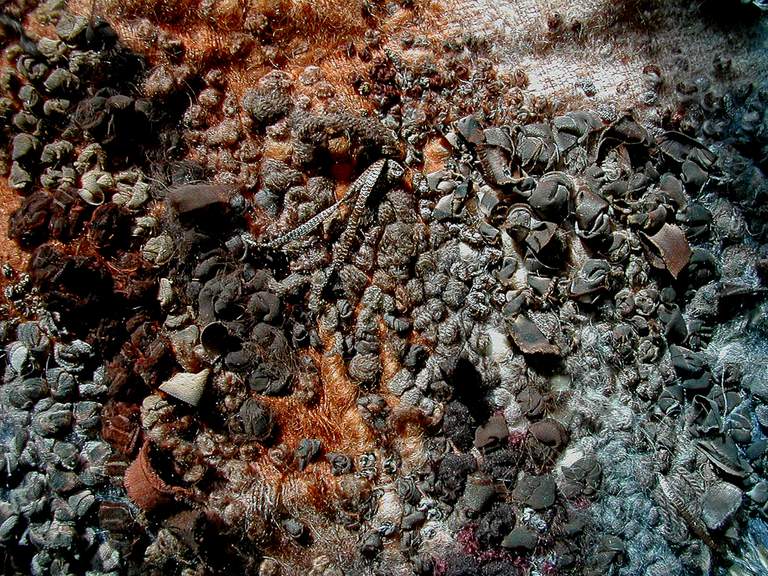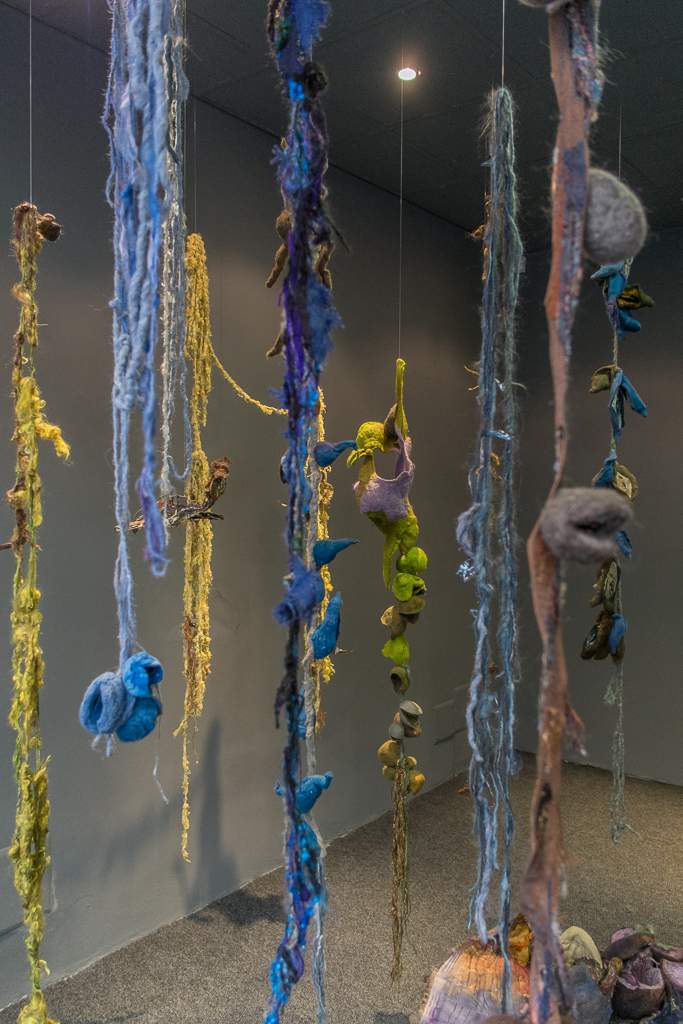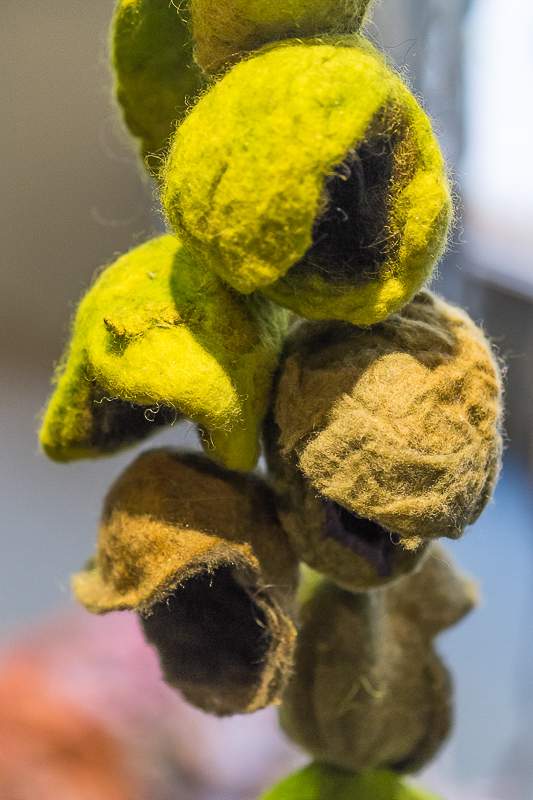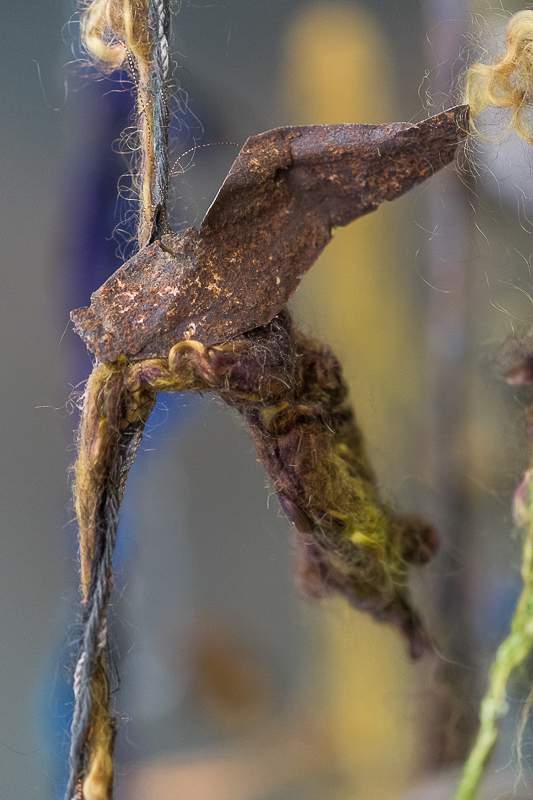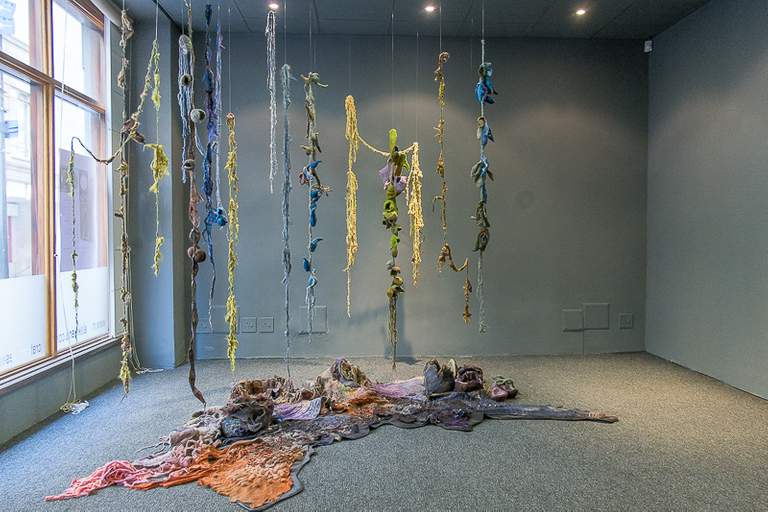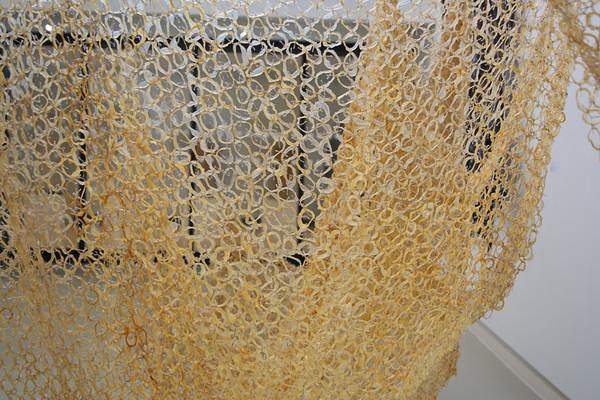Litany

Celia de Villiers
Hand dyed commercial, organic and synthetic textiles and yarns.
Hand weaving, knitting and felting. Hand and machine embroidery, rusted 19th Century pressed ceilings, wire and PET plastic.
W 300cm x H 200cm x 200cm.
Rationale
Due to the globalization of trade since the colonial era, our planetary resources are exploited at an ever-increasing rate. The volume and intensity of human interaction with the environment have produced ecological problems that defy current scientific understanding.
Species reproduce, transfer their characteristics and mutate in response to environmental influences. Prof Thorsten Reusch (2013), from the Institute for Evolution and Biodiversity in Műnster, Germany, points out that marine pollution in particular may result in an abundance of genetically mutated organisms. These phenotypic diversities in subcellular systems are a response to altered growth conditions and impact on the natural environment, fruition and more particularly on biodiversity.
For example, pollution may cause genomic drifts in existing plants and animals which disrupts natural evolution and the functioning of ecosystems. Toxic waste reduces biological diversity and alters the composition of organisms, threaten the extinction of various species and can even change climate patterns.
This artwork (created entirely from repurposed post-consumer materials) is an ironic comment on such genetic adaptations due to plastic pollution of the oceans. Human agency, in the guise of the artist, has resulted in subtle mutations between organic but industrially-processed materials such as linen, cotton, wool and silk, and artificial chemically produced materials such as polyethylene terephthalate (PET) plastics.
It remains rare for industry to be in full legal compliance with the biosafety protocols as set by governments. Section 24 of the Constitution of the Republic of South Africa, which enshrines environmental health and, the prevention of ecological degradation, and the promotion of conservation is not always upheld.
